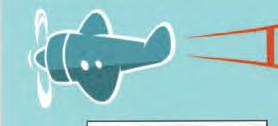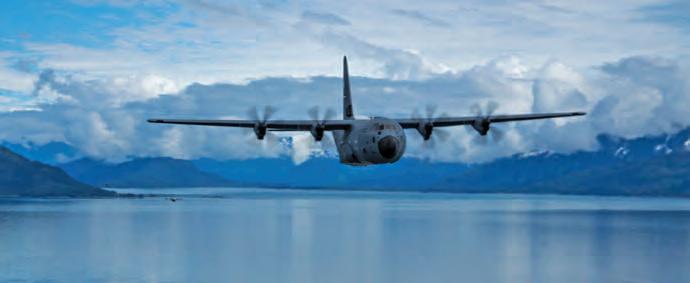
6 minute read
ByMasterSgt.JessicaKendziorek

1929 PARKS P-2A
Advertisement
Senior Care Authority, Peninsula will provide you the guidance concerning your loved one, including finding the best places to live, receiving the proper care, and navigating through a complex health care system.
• Free consultations • Available 7 days a week • Serving South San Francisco to Palo Alto

Senior Living and Care Solutions
For more information contact Annamarie Buonocore at 650/504-8549 abuonocore@seniorcareauthority.com
s



FLYING JENNIES TRAININ ALASKA

A C-130J Super Hercules from the 815th Airlift Squadron takes part in a training exercise at Joint Base Elmendorf-Richardson, Alaska, July 14, 2021. The 815th AS Flying Jennies tested the aircraft and pilot capabilities in a new environment, opposite of their home station of Keesler Air Force Base, Miss. (U.S. Air Force photo by Staff Sgt. Shelton Sherrill)
By Master Sgt. Jessica Kendziorek
403rd Wing Public Affairs
Leaving the heat, humidity and rain of the south and heading north for cooler temperatures, the 815th Airlift Squadron put their Reserve Airmen to the test in at Joint Base Elmendorf-Richardson (JBER) in Alaska with both the temperatures and the terrain, July 13-16.
Working with the 4th Infantry Brigade Combat Team Airborne, 25th Infantry Division, the 815th AS provided airlift for more than over 1,300 paratroopers for three days, as well as airdrops for heavy equipment on the fourth day, during a training exercise at JBER.
“Being able to operate effectively and efficiently in multiple climates and in different types of terrain is an important part of our training,” said Maj. George Metros, 815th AS instructor pilot and exercise mission commander.
Hauling cargo, conducting airdrop and airlift is the mission of the 815th AS, the Flying Jennies, but their training is normally performed in locations similar to their home station at Keesler Air Force Base, Mississippi, using the C-130J Super Hercules.
Metros said they are used to working in places like Fort Polk, Louisiana, Fort Benning, Georgia, and Pope AFB, North Carolina.
“Being able to come up here to JBER, to work with the 3rd Wing using their facilities, plus airdrop a unit that we haven’t dropped a whole lot in the past, the 4/25th IBCT (A), and to do that at a location away from home station in a new terrain for us is an excellent exercise training opportunity,” Metros said.
The terrain in Alaska presented a new challenge for the pilots and loadmasters to tackle. The mountains and valleys provide different types of training scenarios and there are more areas to train in.
“The training up here is dynamic,” Metros said. “We essentially deployed a whole package of folks from across the 403rd Wing, from the 36th Aeromedical Evacuation Squadron, our maintenance group, to our support staff; to come train in an area that is outside of their comfort zone and their normal operations.”
Another major difference for the 815th AS was the Army’s restricted range area in Alaska; this is a special air space reserved just for the military to use, which the 815th AS does not have available to them in Biloxi, Mississippi.
“Having this special-use airspace that we can fly into and we are the only users, makes conducting training operations easier and allows us to accomplish more training opportunities,” Metros said. “We are able to fly into it to drop the heavy equipment, do airdrop operations

The 815th Airlift Squadron, or Flying Jennies, provide airdrop support for more than 1,300 paratroopers from the 4th Infantry Brigade Combat Team Airborne, 25th Infantry Division during a training exercise at Joint Base ElmendorfRichardson, Alaska, July 13-16, 2021. They also dropped over 30,000 pounds of heavy equipment, completed more than eight hours of low-level tactical flight and more than 15 assault landings during the four-day training exercise. (U.S. Air Force photo by Master Sgt. Jessica Kendziorek)
Celebrating the World Premiere of the New Breakout Documentary Film Wting the aelebrC e the New Bre ofemierrorld P ilmout Documentary Fak

F Filmmaker/Photographer/Pilot Dirk Braun is Donating a Portion of er/Photogrilmmak aun is Donating a Pilot Dirk Brapher/P ortion of the Proceeds of His Signed/Framed Limited Edition Fine Art Poster to: oceeds ofrthe P amed Limited Edition Fr His Signed/F oster to:Art Pine

T To Purchase Limited Edition Posters & FLYING BOAT Fine Art Prints, Visit: chase Limited Edition Puro P YING BOosters & FL osters & FLYING BO Visit: rints,Art Pine FT T FA AT www.FlyingBoatFilm.com ilm.comtF.FlyingBoawww

Flying Jennies

Tech. Sgt. Jacob Fountain and Master Sgt. Gary Bryant, 815th Airlift Squadron loadmasters, brace themselves after opening the cargo door ramp while the pilots conduct low-level tactical flight training patterns during a training exercise at Joint Base Elmendorf-Richardson, Alaska, July 13-16, 2021. The terrain of the mountains, valleys and the colder temperatures provided a different challenge for the low-level flights, which were an effective tactic in training for hostile environments. (U.S. Air Force photo by Master Sgt. Jessica Kendziorek)
Continued from Page 14
and do landing-zone operations without worrying about someone coming into our airspace.”
Part of those airdrop operations included personnel drops.
Army Lt. Col. Justin Pritchard, 6th Brigade Engineer Battalion (Airborne) commander, said that his battalion participated in the personnel drops, deploying about 450 parachutes.
“Frankly, having the 815th (AS) here has helped with our proficiency,” Pritchard said. “I was able to jump my assault command post twice this week and all of my companies were able to conduct a tactical assembly. And for us repetition greatly improves our proficiency, so it has been great in that regard.”
Pritchard said they don’t get that many C-130 jumps up here, mostly C-17 Globemaster III’s, and sometimes they are limited to either one jump a month or every other month.
“This week has been a good week,” he said. “I have had at least half of my Soldiers jump twice, while the others jumped at least once.”
Having completed a jump Wednesday and then coming back again to conduct a second jump Friday, Pritchard said having two airborne operations on different days allowed them to see how they improved throughout the week.
“Friday was much better with preparation in working with the Air Force in particular,” Pritchard said. “As far as interoperability between us, and making sure we are saying the same things, by understanding each other’s terms, I could see that we were more organized than we were on Wednesday.”
Pritchard’s battalion also provided the heavy drops for flights on July 15.
While the Flying Jennies routinely load heavy equipment, conduct combat off-loads, and even do some heavy drops during their normal home-station training, they don’t often get the opportunity to drop heavy equipment.
“We don’t necessarily get to do heavy equipment airdrops like this, we often load Humvees up quite a bit at home,” said Capt. Leesa Froelich, 815th AS pilot and the training exercise deputy mission commander. “But we don’t normally get to drop the Humvees, and being able to airdrop them on the parachutes is different and great training for us.”`
During the training exercise, they airdropped more than 30,000 pounds of equipment, something they wouldn’t be able to do back at home, said Master Sgt. Jonathan Parker, 815th AS loadmaster and the exercise Joint Airborne/Air Transportability Training noncommissioned officer in charge.
Another challenge they faced was the assault landing zone in Alaska, which is completely different from the dirt assault strips they normally use.
“Assault strips vary wherever you go and doing the assault landings here on the rock surface was different,” Froelich said. “This terrain presented another type of challenge because we had to make sure that we didn’t use too much reverse to keep the rocks from going into the




